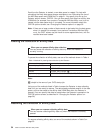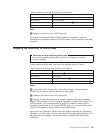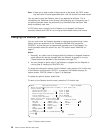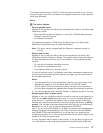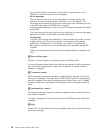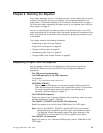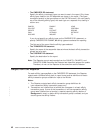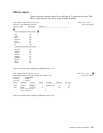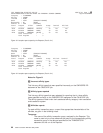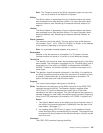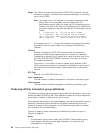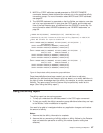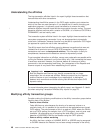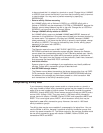
v The CMDGRPS DD statement
Specify the affinity (command) types you want to see in the report. Only those
affinity types listed on this DD statement are shown in the report. (The types
correspond exactly to the type options on the CAFF02 screen.) You can specify
any of the following affinity types, with each type on a separate line, starting in
column one:
CANCEL ENABLE LOAD
COLLECT ENQ PERFORM
CREATE EXTRACT RESYNC
CWA GETMAIN RETRIEVE
DISCARD INQUIRE TS
If you do not specify any affinity types on the CMDGRPS DD statement, or
specify CMDGRPS DD DUMMY, all affinity types are selected for reporting.
The first part of the report lists the affinity types selected.
v The TRANGRPS DD statement
Specify the name of the sequential data set where the basic affinity transaction
groups are to be sent.
v The SYSPRINT DD statement
Specify the destination for the report.
Note: The Reporter cannot read records from the CAUAFF1, CAUAFF2, and
CAUAFF3 VSAM files while the Detector has those files opened for update.
Therefore, do not run the Reporter at the same time as the Detector.
Output from the Reporter
For each affinity type specified on the CMDGRPS DD statement, the Reporter
outputs each individual affinity both in report format and as definitions for basic
affinity transaction groups suitable for input to the Builder.
Notes:
1. The Reporter outputs basic affinity transaction group definitions for
inter-transaction affinity transaction groups only.
2. Transactions not initiated from a terminal do not appear in a basic affinity
transaction group. If none of the transactions in an inter-transaction affinity
group were initiated from a terminal, a special reporting affinity relation of
Background is used; no basic affinity transaction group is created, and you
should ignore the affinity lifetime.
42 CICS Transaction Affinities Utility Guide
|
|
|
|
|



